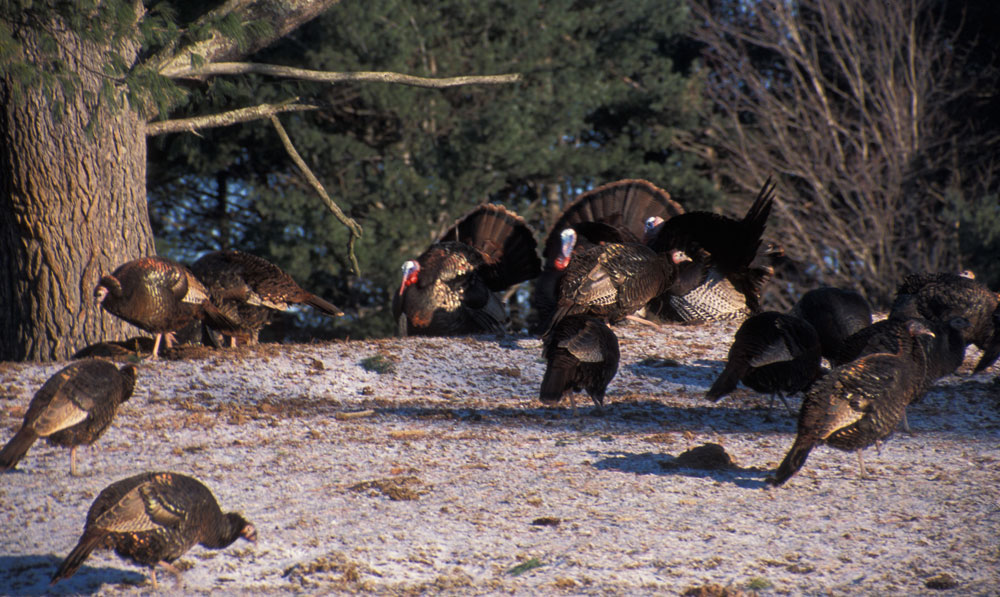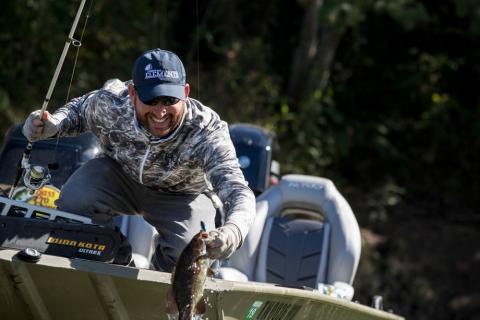Bob Humphrey

Our view from inside the nearly negligible protection of a windowless barn could have seemed almost comedic under different circumstances. Outside, gusty winds drove fat, heavy snowflakes at a 45-degree angle while roosted turkeys clung desperately to the violently rocking limbs of a giant cottonwood. Yes, it might have seemed humorous were it not the day before a 3-day Wyoming hunt on the third leg of my Grand Slam.
Turkey hunting in the snow is simply another obstacle to overcome. Even under the best of circumstances turkey hunting can be challenging. But when Mother Nature throws you a curve ball, the odds fall decidedly in favor of Old Tom. But as we say up in New England, “The only thing you can do about the weather is complain.” Through rain, wind, sleet or snow, the turkeys are still out there and you should be too. You just might have to alter your tactics a little.
We awoke to a foot of snow the next morning on that Wyoming hunt and though it ultimately proved fruitless, we went out anyway. The closest I came was literally snow-tracking to within spitting distance of a jake “bedded” in the snow. But April snows melt quickly and just being out there gave us a chance to pattern the birds and eventually score on the last day on a longbeard that would ultimately prove pivotal in my Grand Slam quest.
Singing in the Rain
I’ve sat out in the rain, sometimes for hours, but it didn’t take too many of those hunts for me to figure out there’s a more comfortable and effective way to pursue turkeys in precipitation. You see, they don’t like rain either. So they don’t gobble and parade around nearly as much as they do on a clear, sunny day. Sure, there are exceptions but they are just that, exceptional. In general turkeys move less and spend most of their time and energy either feeding or preening. So calling is not nearly as effective.
They also don’t like being in the woods, where the noise and motion of rain make it much harder to detect prey. Unlike clear days, when they’ll hit the fields early then retreat to the woods, they’ll often spend a considerable part of a rainy day out in the fields. For the hunter, the simple solution is to set up a ground blind on the edge of a field and camp out. One of my biggest birds came on a rainy day. I watched him feed with a larger group of birds for over three hours before they finally made their way over to my side of the field.
Blowing in the Wind
I recall one Nebraska hunt when it was so windy the gobblers couldn’t go into strut without being blown sideways. Our hopes weren’t too bright on the last afternoon but with two tags yet to fill, Camp Chef’s Matt Anderson and I headed to a steep-sided draw where I figured we might at least escape the wind.
Apparently the turkeys figured that, too, for about an hour before fly-up, Matt and I experienced something that can only be described as a natural phenomenon. It started with a trickle of birds here and there, pausing briefly at the ridge top before setting their wings and sailing down into the calm valley, where Matt and I sat snugly against the bole of a big cottonwood. The trickle turned into a flow, then a flood and soon I got a sense of what the Germans must have felt like watching British and American paratroops gliding in on D-day.
You can’t control the weather and as my friend, Mike Jordan is fond of saying, “The best time to be in the woods is when the season is open.” Hunting days are far too valuable to squander so when Mother Nature throws you a curve ball, roll with it.



























